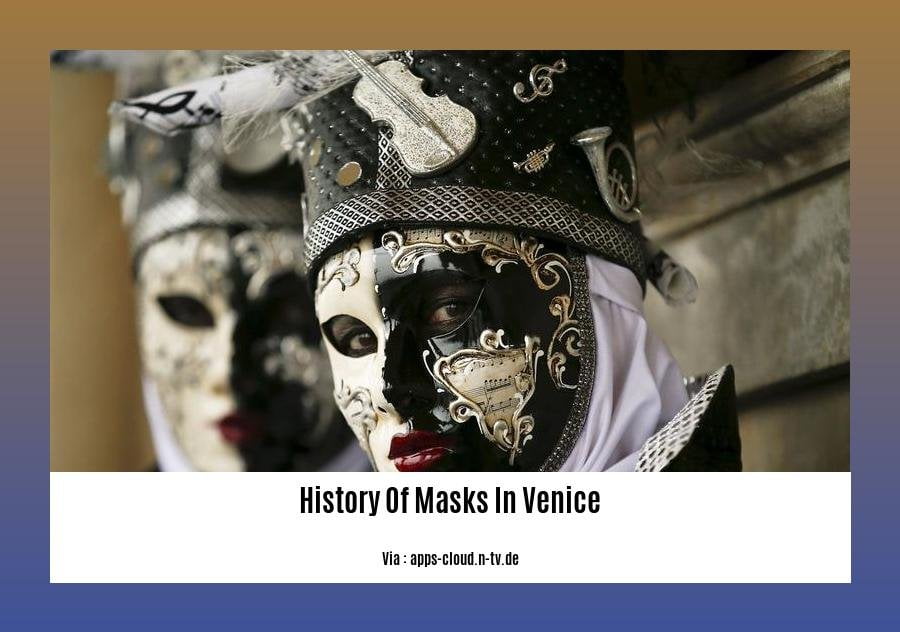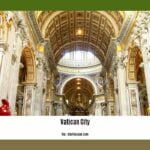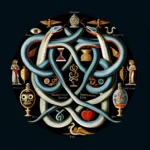Embark on a captivating journey through time as we unveil the hidden depths of Venetian masks in our article titled [A Journey Through Time: Unmasking the History of Masks in Venice]. Prepare to be mesmerized as we delve into the rich history, symbolism, and cultural significance that have transformed these iconic masks into enduring symbols of Venice’s allure.
Key Takeaways:
Venetian mask-wearing dates back to the 12th century.
Masks were possibly introduced to reduce social tensions in the city.
Masks enabled people from all walks of life to interact equally and anonymously.
The Bauta mask, with its distinctive projecting jawline, is a classic Venetian mask.
History of Masks in Venice
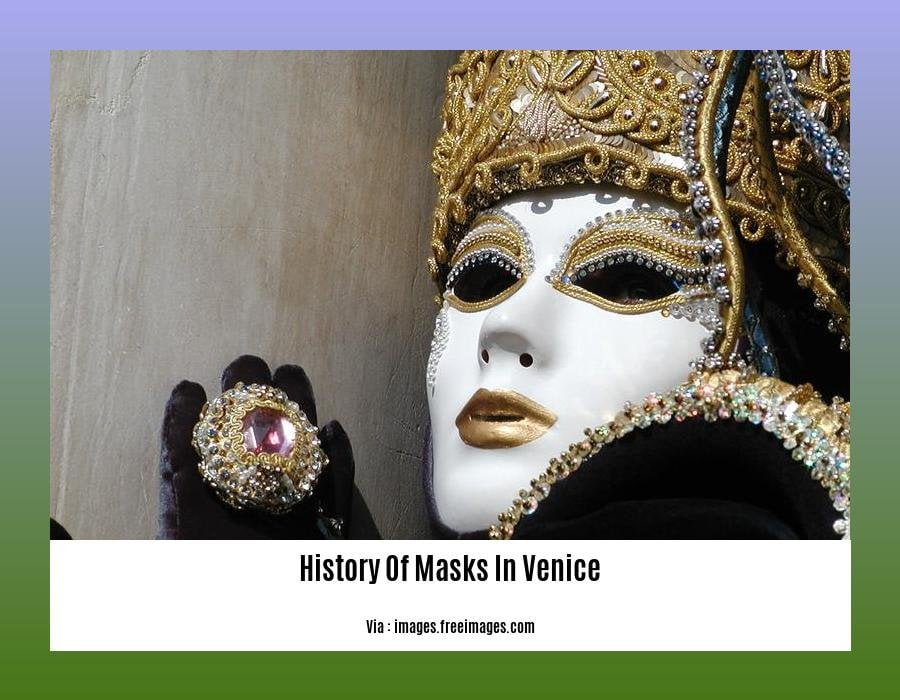
Let’s time-travel back to 12th-century Venice, a bustling city-state where a distinctive custom emerged: mask-wearing. History suggests that these masks were a clever solution to ease social tensions, allowing individuals from diverse backgrounds to mingle and celebrate without fear of judgment.
Over time, masks evolved into a way of life for Venetians, serving as a great equalizer and promoting anonymity. Whether attending lavish balls, participating in vibrant carnivals, or simply strolling through the city’s labyrinthine streets, masks offered a liberating sense of freedom and anonymity.
Of the many masks that graced Venetian faces, the Bauta stands out as one of the oldest and most iconic. Its characteristic beak-like shape and projecting square jawline exuded an air of mystery and intrigue. The Bauta’s popularity soared in the 17th century, when it became a staple accessory for both men and women.
Beyond their social significance, Venetian masks also played a crucial role in the city’s theatrical traditions. The Venetian theater, renowned for its elaborate productions and use of masks, offered a platform for actors to portray a wide range of characters, often satirizing the social and political norms of the time.
The history of masks in Venice is a fascinating narrative of social customs, artistic expression, and the pursuit of freedom. These iconic masks not only shaped the city’s unique identity but also left an indelible mark on the world of art, theater, and cultural history.
H3: Symbolism and Significance
Venetian masks were not mere accessories; they carried deep symbolic meanings, reflecting the complex social and political dynamics of the city.
Social Equalizer: Masks allowed people from all walks of life to mingle on an equal footing, regardless of their social status or wealth.
Anonymity: Masks provided anonymity, freeing individuals from social constraints and allowing them to express themselves more freely.
Carnival Festivities: During Carnival, masks were essential to the city’s vibrant celebrations, creating an atmosphere of revelry and liberation.
Theater and Performance: Masks played a crucial role in Venetian theater, enhancing the performances and conveying a range of emotions and characters.
Satire and Subversion: Masks were often used as a tool for satire, allowing people to criticize the ruling class or express controversial views without fear of reprisal.
Did you know that the rich history of martial arts dates back to prehistoric times? Are you interested in knowing how the history of massage came into being? Here is the history of massage timeline.
Evolution Over Time
Scattered across the canals and piazzas of Venice, the vibrant masks have long held a mirror to the city’s past. Join us as we unravel the rich evolution over time of these iconic symbols, uncovering the stories and traditions they embody.
Masks: A Venetian Tapestry
In the heart of La Serenissima, masks weren’t just accessories; they were a way of life. They leveled social hierarchies, fostered anonymity, and gave a license to express oneself freely. Imagine the bustling streets teeming with enigmatic figures, their faces concealed behind intricate visages.
A Symphony of Styles
Venetian masks weren’t one-size-fits-all. Each style carried its own unique story. The Bauta, with its beak-like shape and square jaw, exuded an air of mystery. The Colombina, with its delicate features and soft curves, symbolized youthful innocence. And the Medico della Peste, a haunting visage with a long, beak-like nose, harked back to Venice’s battle against the plague.
Artists’ Canvas
Venice’s renowned artists immortalized the allure of masks in their masterpieces. Take Tintoretto’s ‘The Miracle of the Slave’, where a Venetian beauty dons a mask, embodying both seduction and intrigue. Or Longhi’s ‘The Rhinoceros’, capturing the spectacle of a masked ball, showcasing the masks’ vibrant theatricality.
From Ritual to Runway
Masquerade balls were grand affairs, where masks transformed ordinary Venetians into characters of their own making. They danced, flirted, and reveled, hidden behind their chosen identities. Today, the tradition lives on in the annual Venice Carnival, where masks take center stage, uniting past and present in a vibrant spectacle.
Key Takeaways:
- In Venice, masks weren’t just adornments; they were tools for social leveling, anonymity, and uninhibited expression.
- Different mask styles held distinct meanings, from the mysterious Bauta to the charming Colombina and the haunting Medico della Peste.
- Venetian masters like Tintoretto and Longhi captured the essence of masks in their paintings, showcasing their cultural significance.
- Masquerade balls were grand social events where masks facilitated role-playing, intrigue, and uninhibited revelry.
- The tradition continues today in the annual Venice Carnival, where masks remain central to the city’s cultural identity.
Sources:
[1]
[2] https://theculturetrip.com/europe/italy/articles/a-guide-to-the-masks-of-venice/
Cultural Festivals: Unveiling the Enchantment of Venetian Masks
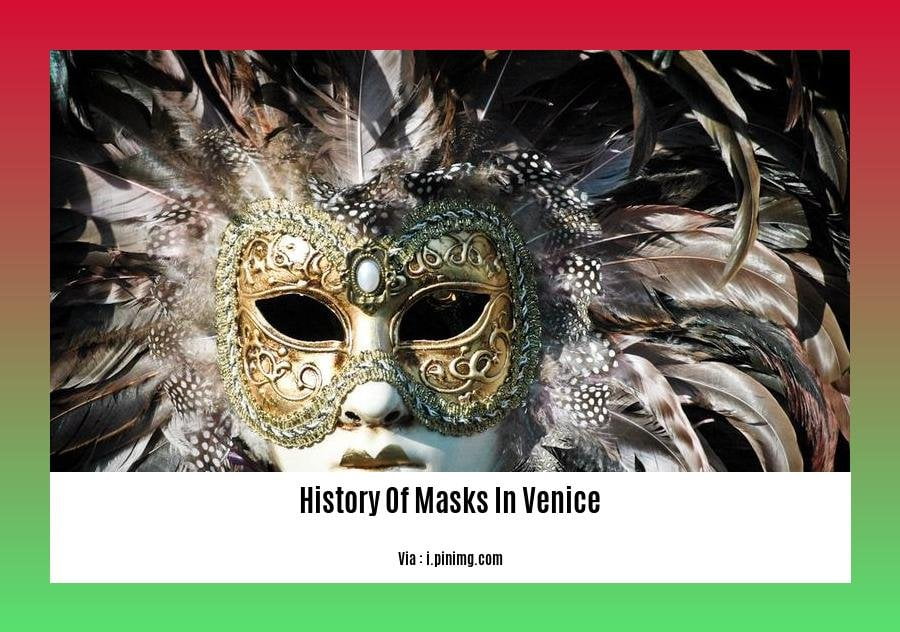
Beneath the shimmering canals and architectural marvels of Venice lies a world of hidden identities and unbridled revelry. For centuries, the city has played host to one of the world’s most captivating Cultural Festivals, the Venetian Carnival. This extravagant spectacle, steeped in history and tradition, invites visitors to embark on a journey of transformation, where masks become the gateway to a realm of boundless imagination.
Key Takeaways:
- The Venetian Carnival, dating back to the 9th century, is a vibrant celebration of Venetian history and culture.
- The festival’s origins can be traced to 1162, commemorating Venice’s victory over Aquileia.
- Mask-wearing became so prevalent that the government eventually restricted it to the Carnival season.
- The tradition of mask-wearing emerged in the 13th century, allowing Venetians to mingle freely during festivities.
- During the Carnival, social hierarchies dissolve, making way for processions, plays, music, dancing, and unrestrained revelry.
The Venetian Carnival is a living testament to the city’s rich past. Its masks, intricately crafted and adorned with vibrant colors, serve as symbols of liberation, anonymity, and the pursuit of joy. They invite participants to shed their inhibitions and embrace the transformative power of disguise.
As you wander through the labyrinthine streets of Venice during Carnival, you’ll encounter a kaleidoscope of characters—from the enigmatic Bauta mask with its beak-like shape to the delicate Colombina, a symbol of youthful innocence. Each mask tells a story, revealing the wearer’s desires, dreams, and hidden identities.
The Venetian Carnival is not just a festival; it’s an immersive experience that transports visitors to a bygone era. It’s a celebration of Venetian heritage, a testament to the city’s enduring spirit of creativity and freedom.
Participating in the Venetian Carnival
If you’re planning to attend the Venetian Carnival, here are a few tips to help you make the most of your experience:
- Embrace the Spirit of Disguise: Choose a mask that resonates with your personality and allows you to fully immerse yourself in the festival.
- Explore the City: Take advantage of the opportunity to explore Venice’s hidden gems and iconic landmarks while wearing your mask.
- Attend the Festivities: Immerse yourself in the Carnival’s vibrant atmosphere by attending the numerous parades, balls, and performances.
- Respect Local Customs: Remember that the Venetian Carnival is a cultural event, so be respectful of local traditions and customs.
Sources:
[1] https://theculturetrip.com/europe/italy/articles/a-brief-history-of-the-carnival-of-venice/
[2] https://theculturetrip.com/europe/italy/articles/a-guide-to-the-masks-of-venice/]
Contemporary Significance
The contemporary significance of Venetian masks goes beyond their historical charm. These captivating creations continue to permeate modern-day Venetian culture, captivating tourists and fueling artistic expressions in a myriad of ways:
Tourism and Cultural Identity:
The demand for masks has surged with Venice’s growing tourism industry. They serve as iconic souvenirs, embodying Venetian identity and drawing visitors from far and wide.Artistic Inspiration:
Masks have become potent symbols in contemporary art, fashion, and design. From haute couture runways to art installations, these masks inspire modern-day artists and designers to explore themes of identity, anonymity, and creativity.Carnival Celebrations:
The annual Venice Carnival remains a grand stage for masks. While the festivities have evolved, masks continue to be an integral part of the spectacle, symbolizing freedom, joy, and the suspension of social norms.Theater and Performance:
Venetian masks are a staple in contemporary theater and performance art. They allow actors and performers to embody diverse characters, blurring the lines between reality and illusion, and creating a captivating theatrical experience.Metaphorical Symbolism:
Masks have transcended their literal purpose, becoming powerful metaphors in modern-day contexts. From political protests to social movements, masks serve as powerful symbols of resistance, anonymity, and the quest for identity.
Key Takeaways:
Venetian masks have evolved from their historical roots to become contemporary cultural icons.
They represent diverse themes, from tourism and entertainment to art and social commentary.
Masks continue to fascinate and inspire modern-day artists, designers, and performers.
They serve as powerful symbols in contemporary culture, embodying themes of identity, anonymity, and freedom.
Masks provide a unique lens through which to explore the multifaceted nature of Venetian culture and its enduring legacy.
[1] A Guide to the Masks of Venice: https://theculturetrip.com/europe/italy/articles/a-guide-to-the-masks-of-venice/
[2] The History of Venetian Masks:
FAQ
Q1: When did the tradition of wearing masks in Venice originate?
A1: The tradition of wearing masks in Venice dates back to the 12th century.
Q2: What was the purpose of masks in Venetian society?
A2: Masks were initially introduced as a way to ease social tensions and promote anonymity, allowing people from all walks of life to mingle and celebrate together without fear of judgment.
Q3: How did Venetian masks become a symbol of the city?
A3: Over time, Venetian masks evolved into a distinctive symbol of the city, representing its unique social and cultural identity. They became a way of life for the Venetians, serving as a social equalizer and promoting a sense of freedom and anonymity.
Q4: What are some of the most iconic Venetian masks?
A4: Among the most iconic Venetian masks are the Bauta, a mask with a projecting square jawline; the Volto, a simple white mask that conceals the entire face; the Medico della Peste, a mask with a long, beak-like nose used by doctors during the plague; and the Arlecchino, a colorful mask with a diamond-patterned design.
Q5: How are Venetian masks traditionally made?
A5: Venetian masks are traditionally handcrafted using a variety of techniques, including paper-mâché, leather, and metal. The process of creating a mask can be intricate and time-consuming, requiring skilled artisans to sculpt, mold, and decorate each piece.
- Crypto Quotes’ Red Flags: Avoid Costly Mistakes - June 30, 2025
- Unlock Inspirational Crypto Quotes: Future Predictions - June 30, 2025
- Famous Bitcoin Quotes: A Deep Dive into Crypto’s History - June 30, 2025
